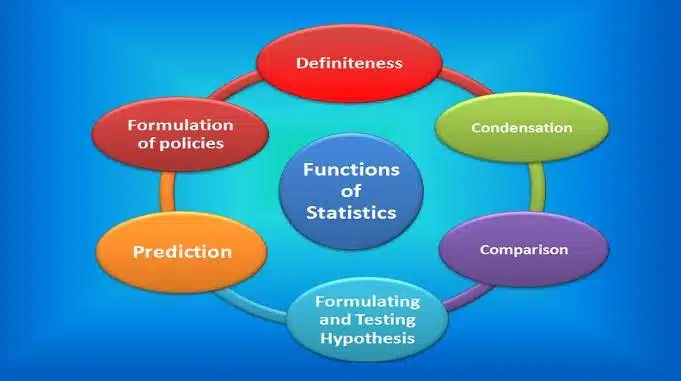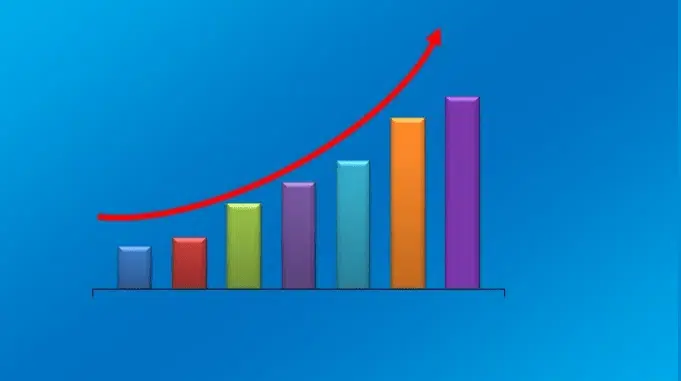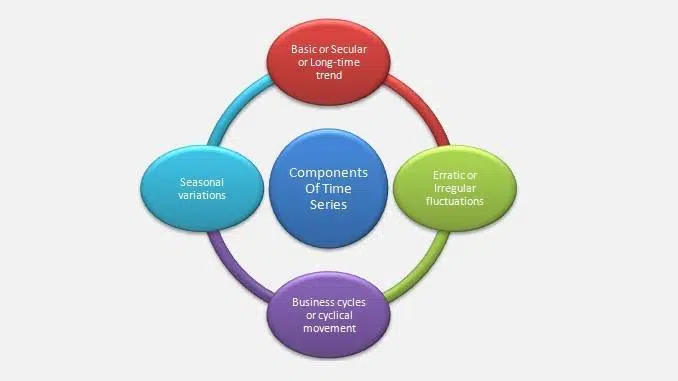
Functions of Statistics:
Important functions of statistics are as follows:
1. Definiteness: It presents facts in definite form.
The most important function of statistics is to present general statements in a precise and definite form, because numerical expressions are more convincing than those that are expressed in terms of quality. With the use of figures, we may portray things in their true form. Our concepts would be unclear and indefinite if we did not do statistical analysis.
For example, the statement says the sex ratio in India is increasing. From this statement, the reader would not have a clear idea of the situation. But if we say that the sex ratio has gone up from 600 in 2011 to 999 in 2021, it conveys a definite meaning.
So, the facts must be stated in a definite manner.
2. Condensation: It simplifies the mass of figures.
Statistics not only present facts in a clear manner, but they also aid in the condensing of a large amount of data into a few significant statistics. It reduces a large number of figures to a single figure.
Statistical approaches, in a sense, offer meaningful overall information from a large amount of data. This makes the problem more understandable.
3. Comparison: It facilitates comparison.
The data can be correlated as well as compared after it has been simplified. Certain mathematical values, such as averages or coefficients, are the best representations of the relationship between the two groups. Figures are typically meaningless unless they are compared to others of the same type.
For example, stating that a car’s production has increased will be meaningless unless some figures are compared. But the statement that production has increased from 100 cars per day in October 1987 to over 9,000 automobiles per day in August 2021 clearly indicates an upward trend in output.
4. Formulating and Testing Hypothesis: It helps in formulating and testing hypothesis.
Statistical methods assist us in formulating and testing hypotheses to develop new theories.
For example, hypotheses such as whether a particular medicine is useful in preventing typhoid, whether students profit from extra coaching, whether or not a credit squeeze is effective in containing inflation, etc. can be tested by using statistical methods.
5. Prediction or Forecasting: It helps in prediction.
Statistics can also forecast how events will occur in the future. On the basis of statistical estimates, we can make future policy decisions. Organizational plans and policies are developed far in advance of their execution. Future trends can aid in the formulation of appropriate policies and programmes.
For example, if we know the population in 2021 and the population growth rate in the past, we may estimate the demand for commodities in 2022. Similarly, if a trader is knowledgeable about market trends, he can successfully take advantage of the market scenario.
Statistics aid in the development of future policies.
6. Formulation of policies: It helps in the formulation of suitable policies.
We can formulate effective policies with the use of statistics.
For example, it may be required to decide how much oil a country should import in 2022, it would be determined by expected internal production and oil consumption in 2022.
(Source – Various books from the college library)
Copyrighted Material © 2019 - 2024 Prinsli.com - All rights reserved
All content on this website is copyrighted. It is prohibited to copy, publish or distribute the content and images of this website through any website, book, newspaper, software, videos, YouTube Channel or any other medium without written permission. You are not authorized to alter, obscure or remove any proprietary information, copyright or logo from this Website in any way. If any of these rules are violated, it will be strongly protested and legal action will be taken.




Be the first to comment